Wait, You Can Smell the Met Gala?
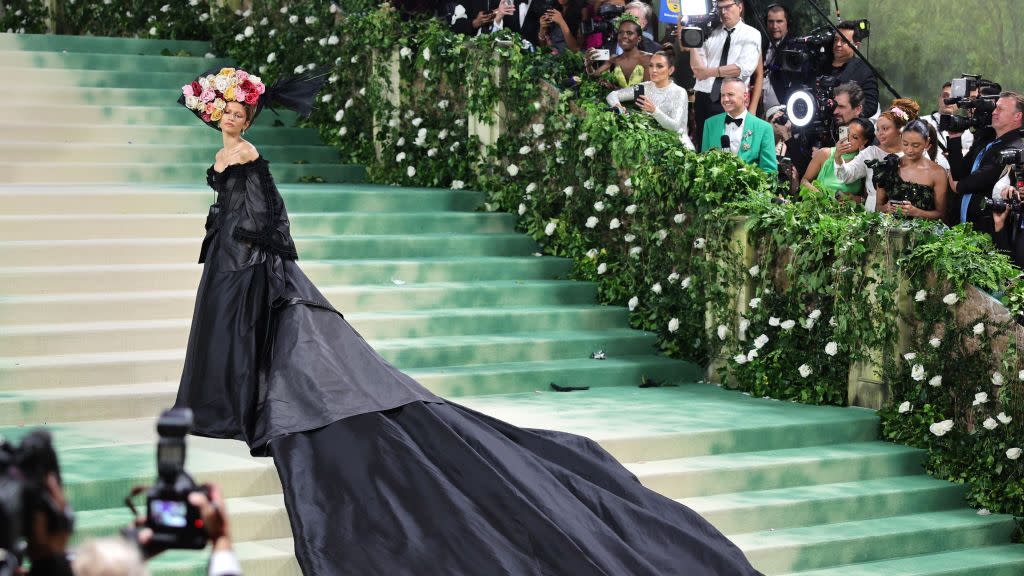
Can you smell it? The ghostly remains of Paul Poiret’s 1912 La Rose de Rosine perfume, wafting from the corridors of the Met’s West Wing? While museums are famously hands-off spaces, the Metropolitan Museum of Art’s spring exhibition “Sleeping Beauties: Reawakening Fashion” (open to the public starting Wednesday through September 2) encourages visitors to look, touch, listen, and yes—even smell—hundreds of historical garments.
“Since fashion is a living art form, it depends on the body to activate it,” said Andrew Bolton, Wendy Yu Curator in Charge of the Costume Institute, at a press conference. “Fashion is almost asking to be touched. It evinces so many senses—unlike a painting, which is put on a wall and is just seen.”
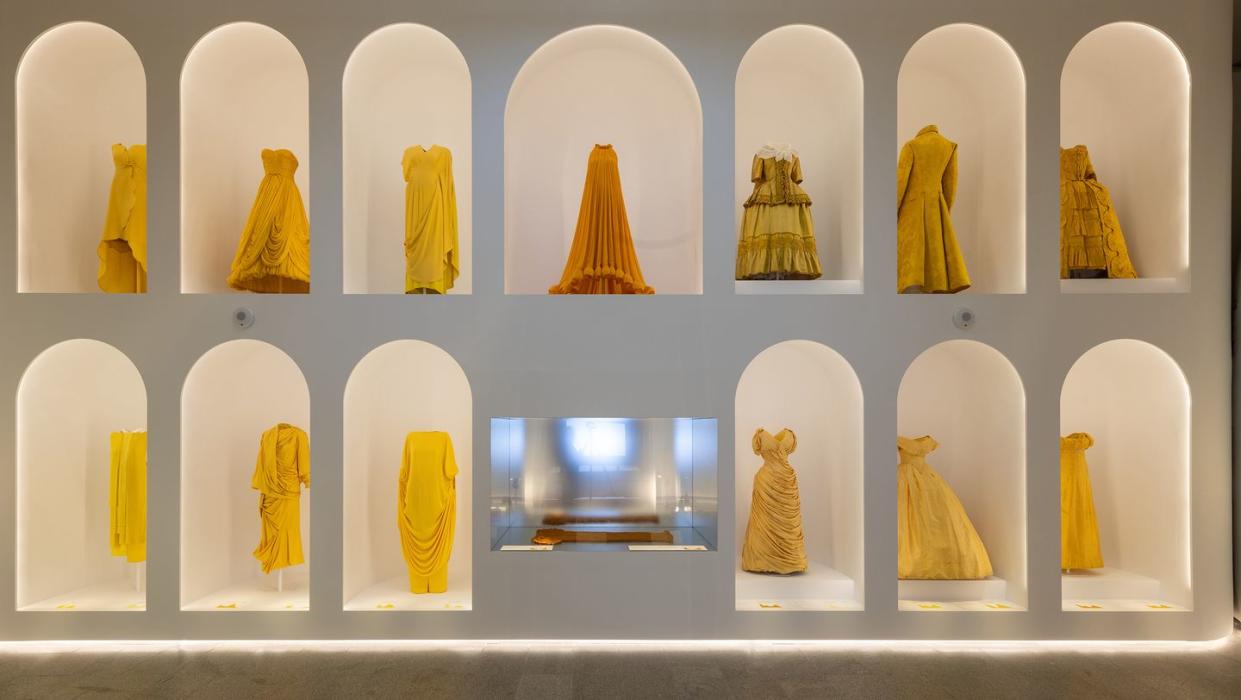
The exhibitio, envisioned by architecture firm Leong Leong, is made up of a series of 29 modular rooms that feature 15 “sleeping beauties”—garments spanning 400 years of history that are in a state of degradation and too fragile to hang on a mannequin—entombed horizontally in glass. Instead of fulfilling their function to be worn, these pieces (exhibited in tandem with 250 more contemporary garments and accessories) will be displayed in an entirely new way.
One room draws upon the idea that perfume remains embedded in a garment. Beside three dresses, including Paul Poiret’s 1913 La Rose d’Iribe dress, sections of a wall are awash in paint that emits the scent of each. In another room, a 1938 House of Schiaparelli blue silk crepe evening dress that belonged to early-20th-century socialite and philanthropist Millicent Rogers is accompanied by a set of nearby plastic tubes emitting the smell of six peak molecules from the dress. “You’re actually smelling Millicent Rogers,” Bolton said in the press conference. “You’re smelling not only the fragrance she wore, but her natural body odors, what she ate, what she drank, what she smoked, and where she lived.”
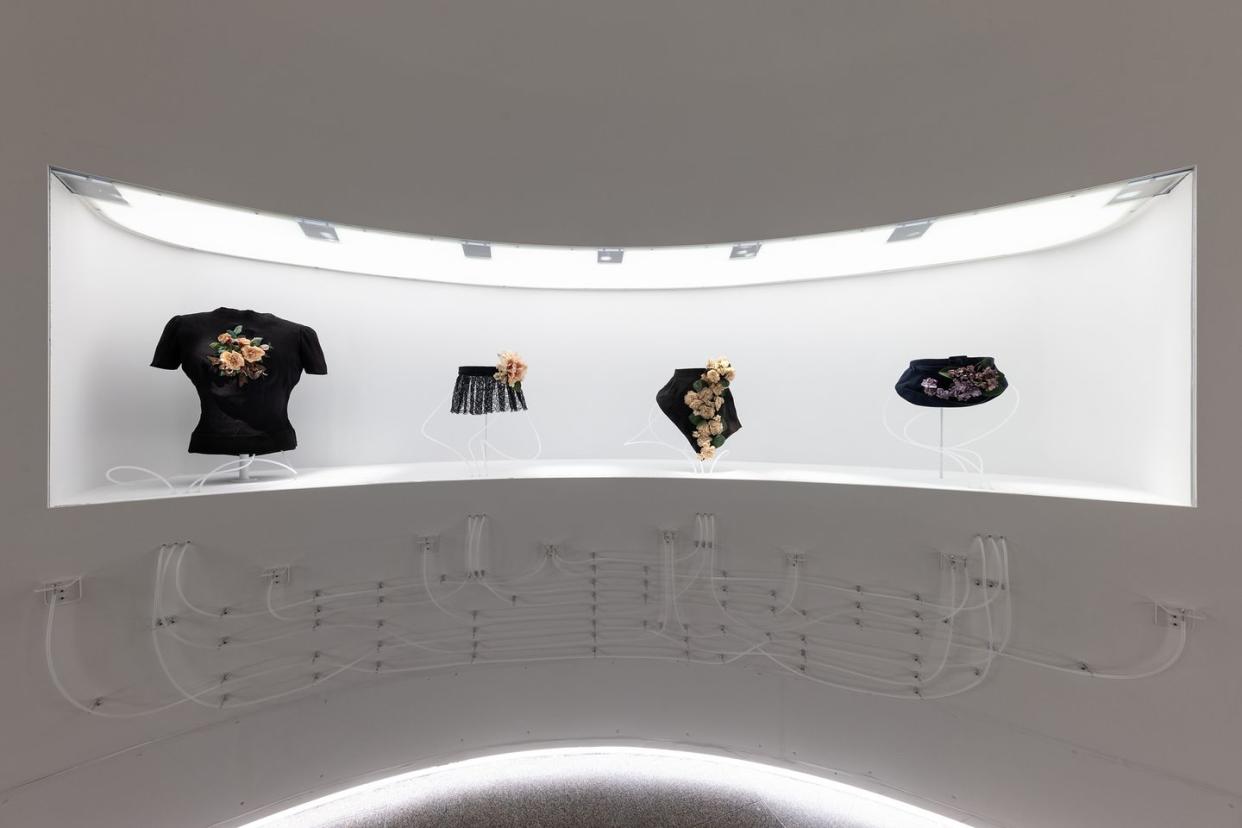
The smells have been extracted by smell researcher and artist Sissel Tolaas, who worked in collaboration with architect Dominic Leong and his team. “The exhibition design is a hybrid of these two notions of how we relate to nature, through scientific inquiry and observation,” Leong tells ELLE DECOR. “We incorporated the clinical aesthetic of a laboratory, through beakers and petri dishes that emit smells, and then structured other rooms to create an immersive nature experience through large projection surfaces.”
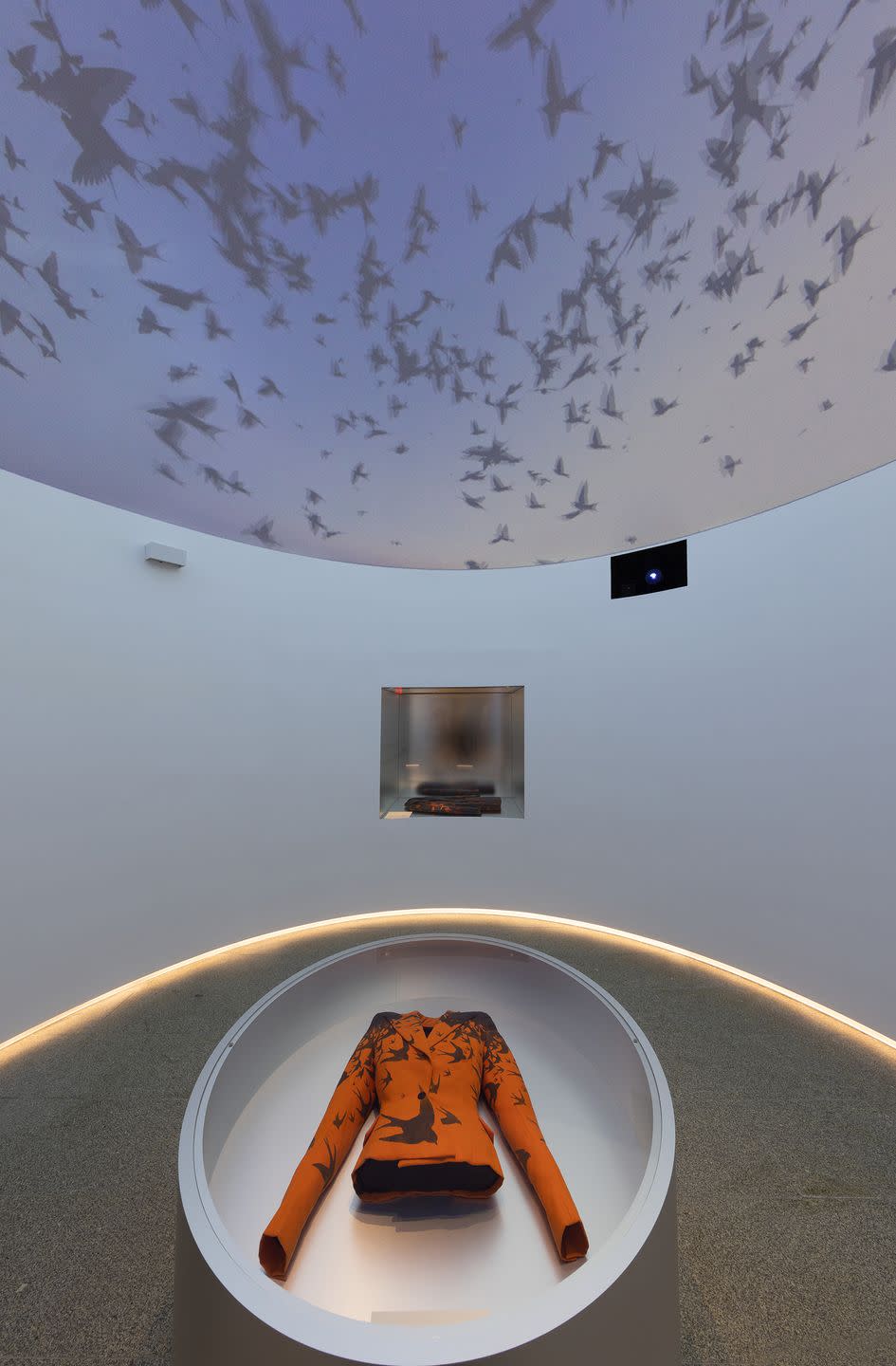
One area featuring an Alexander McQueen jacket is flooded by a ceiling brimming with flying crows. In another, one is transported to a lush English garden, blooming with flower-embellished hats. Further on, touch comes into play when the intricate embroidery of a 1615–20 waistcoat has been reimagined in an interactive embossed wallpaper that was made to Braille specifications. “Go ahead—touch it,” a museum guard repeatedly quipped to reluctant visitors on the opening day of the exhibit. “Forget everything you know about museum etiquette.”
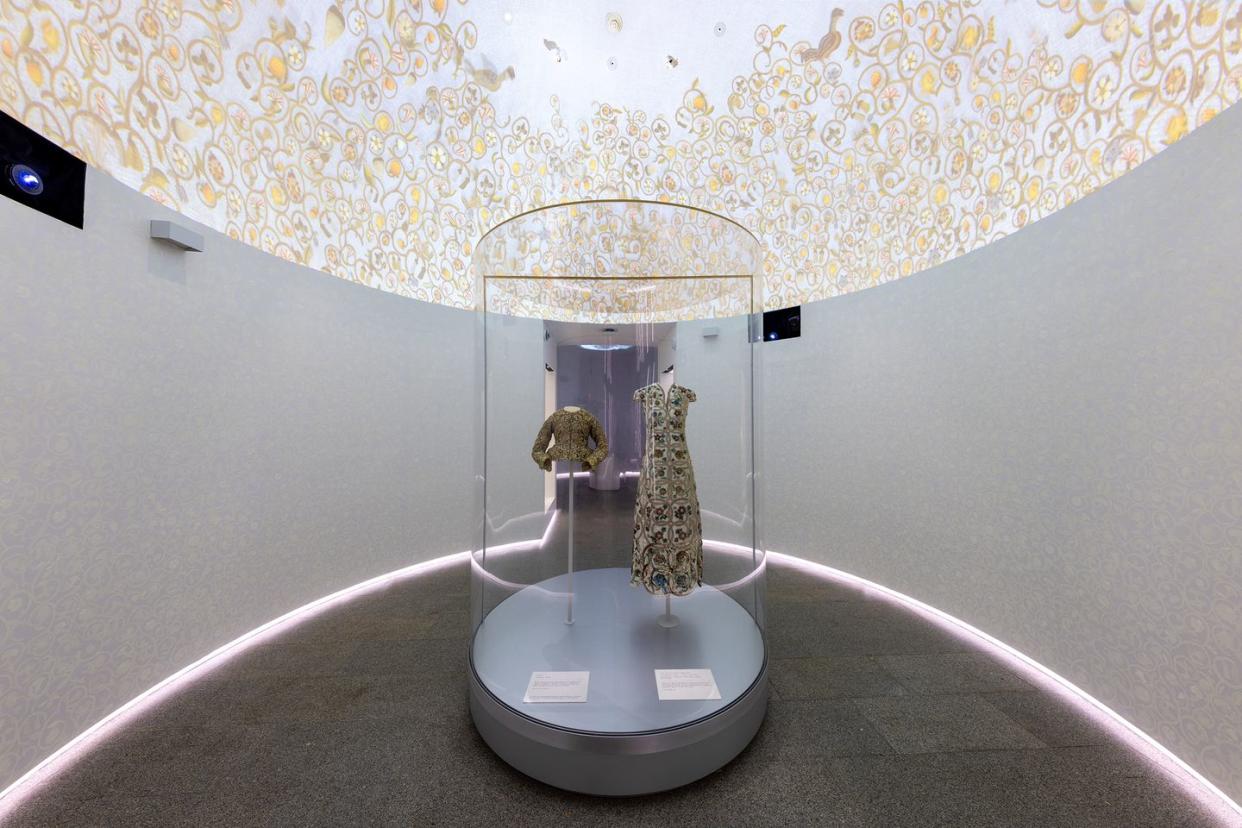
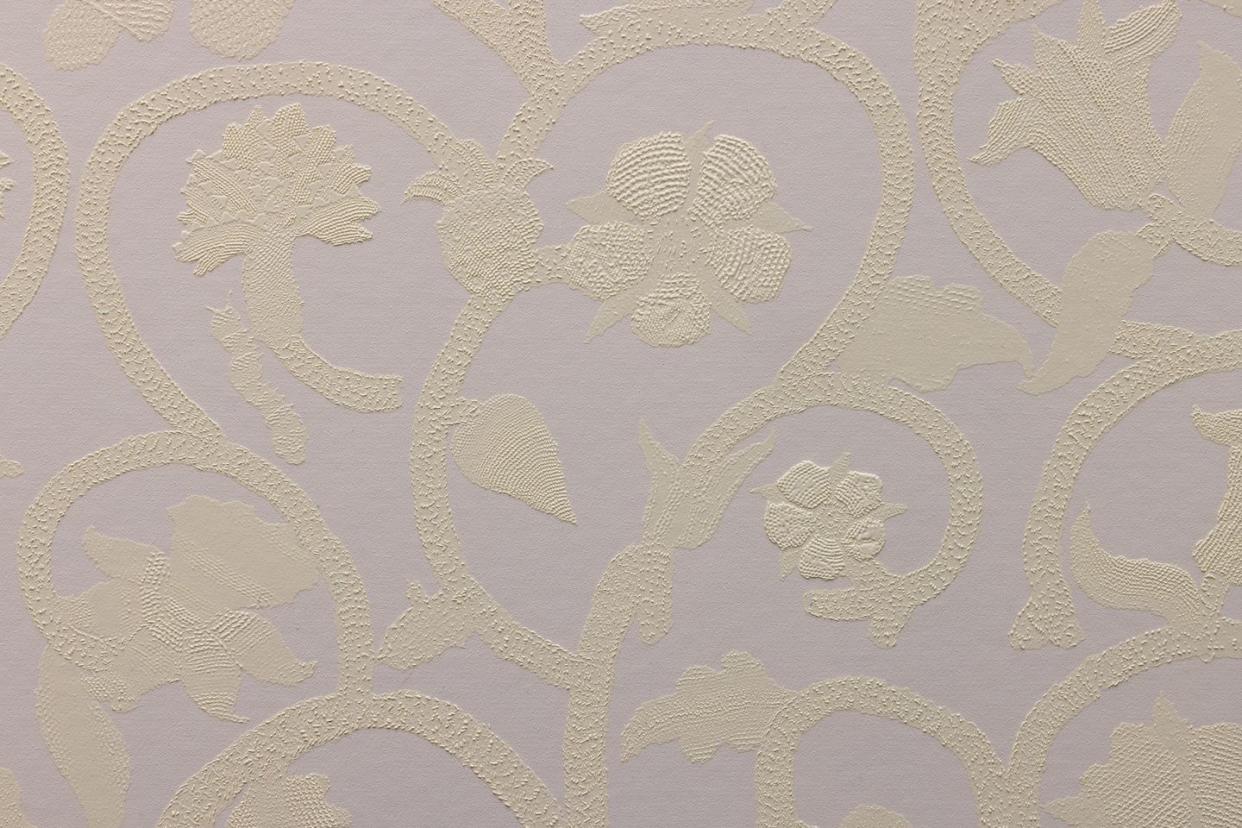
Technology also comes into play throughout the exhibition—a feat that Leong says hides behind the guise of a streamlined, minimalistic exhibit space. “Behind it, there’s like seven miles of wiring and cabling,” he says, laughing. “It was a pretty big effort to make it all disappear.”
But the veneer could fool anyone. Charles Frederick Worth’s degrading 1887 silk “Cloud” dress is reimagined opposite from it in a projection created by the illusion technique known as Pepper’s ghost. In it, a figure dawning the dress whirls and spins (appropriately, to the musical score of Tchaikovsky’s Sleeping Beauty), demonstrating how it would have moved and fit its bearer.
In the final section, a ChatGPT-powered interaction created by Open AI allows visitors to chat with Jazz Age–era socialite Natalie Potter about her wedding gown and nearly anything else. Reflects Leong: “It’s incredible to work with the Costume Institute, creating exhibitions that push the boundaries of design.”
You Might Also Like
